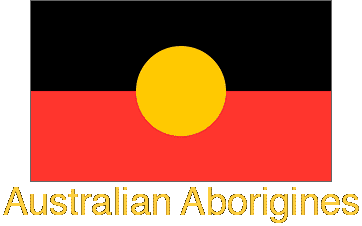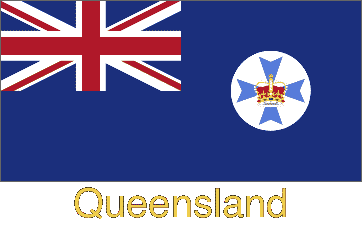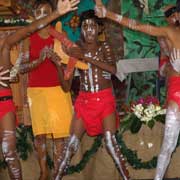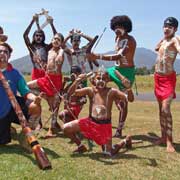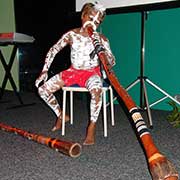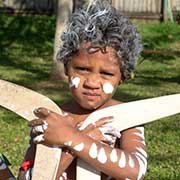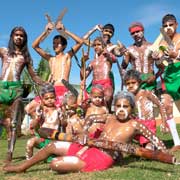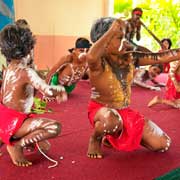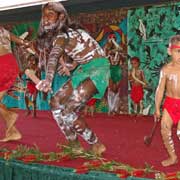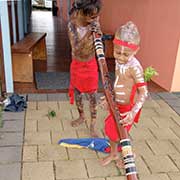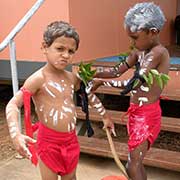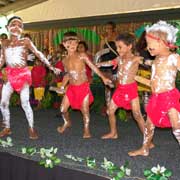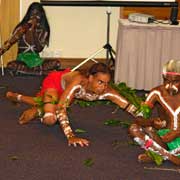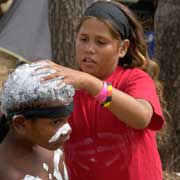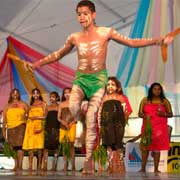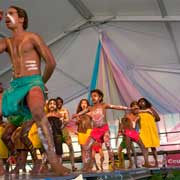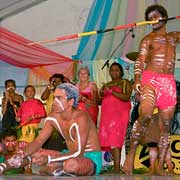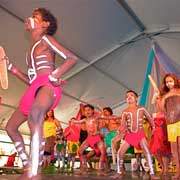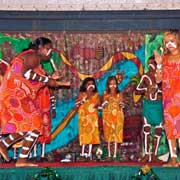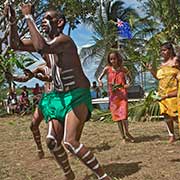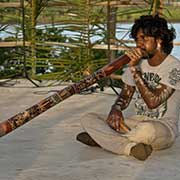Photos of Djarragun College Aboriginal dancers, Australia
Djarragun College Aboriginal dancers
Before the arrival of the white people, in the latter half of the 19th Century, the country around what is now Cairns in northern Queensland was covered in rainforest, a landscape that can still be observed today in small pockets in the area and Daintree National Park, to the north. The Aborigines living in the area belonged to different groups of rainforest people. In 1941 the researchers Tindale and Birdsell identified what they termed Tasmanoid people (similar to Tasmanian Aborigines) living in the rainforests of North Queensland, a group of about 12 tribes, described as small or pygmoid in stature, with crisp curly hair. Because they had territories near Lake Barrine, a crater lake between Gordonvale and Yungaburra on the Atherton Tablelands, they were also called Barrineans by the anthropologists, who found they spoke related languages; however, the people themselves, the Ngadjan, Ma:mu, Wanjuri, Djabugay (or Djabuganydji), Mbabaram, Yidinydji, Gungganydji, Buluway, Djiru, Djirubal (or Dyirbal), Gulngay and Girramay, had always felt they were separate peoples.
you may then send it as a postcard if you wish.
All changed with the colonisation of their land, the destruction of their rainforest homes to make room for white farms, the mines, murder, dislocation of the people to missions away from their ancestral homes and racial mixing; then, the removal of "halfcast" children from the unions of the people with the whites, to be brought up without access to their language and culture: the "stolen generation". And then the missions: An Anglican Church missionary, Ernest Gribble, began to regularly visit the Gungganydji people who inhabited the Yarrabah area when they were still living a very traditional lifestyle. He encouraged the tribe to move to a mission settlement he was setting up. With the help of the tribe's leader, Menmuny, they moved to the mission now known as Yarrabah Community in 1893. Over time, many people (including some South Sea Islanders) were relocated from homelands in the surrounding area to Yarrabah, causing a further mixing of the population.
As a result the traditional ceremonies, dances, music, language and many other aspects of the culture faded away. But attraction to their land, kinship and many other aspects of Aboriginality has remained strong; and the need of Aboriginal identity and culture has become stronger in the more recent past, especially among the young. This has been the driving force behind an Aboriginal cultural revival, with music, dance and art that may be different from the ancient culture, now lost, but nevertheless giving a sense of pride and belonging.
Shortly after the opening of Djarragun College in Gordonvale in 2001, the Torres Strait Islander boys formed a group that performed traditional dances; they had many elders, family and workers at the school who coached them; their islands were never settled by outsiders and their language and culture stayed alive. But it took almost four years for an Aboriginal dance group to be formed because it proved very difficult to find any adults who could teach them. Eventually, with the encouragement and coaching by non-Aboriginal teachers and watching videos of dancing, a start was made and over the years this blossomed into a very active Aboriginal dance group, where boys and girls perform dances that depict activities like looking for bush honey, fishing along a crocodile infested creek, swatting mosquitoes, the movements of the cassowary (a large bird) plus the vigorous Arnhem Land-style "shake a leg" dances, accompanied by the sound of the didjeridu, clapsticks and plywood boomerangs. The didjeridu (or didgeridoo, yirdaki) was traditionally only played by people of the eastern Kimberley region and Arnhem Land, and then only by the men, but it has now well and truly been adopted here as well. Although these are essentially modern adaptations and don't have the connection with traditional myths as is still the case in the Northern Territory, these dances are now becoming "traditional culture" in this region and were performed with pride by the children at the school and at various cultural festivals in the good days, when this was the best and most inclusive indigenous school under its founding principal during the decade finishing in 2010.
